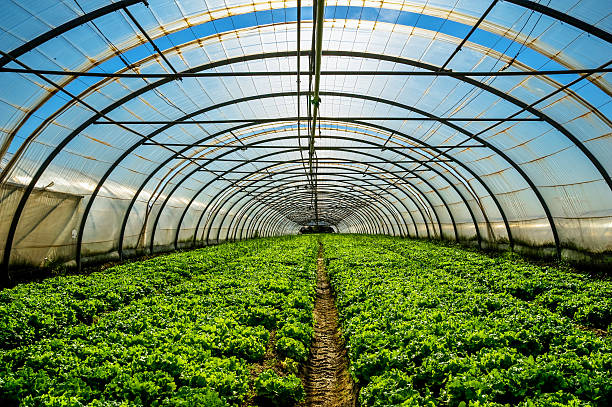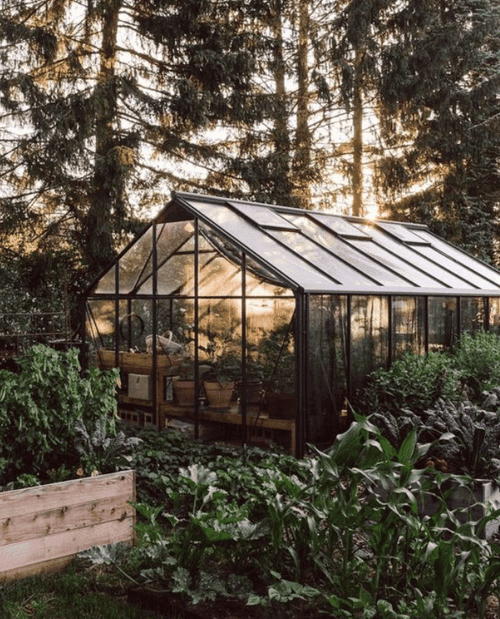Growing Excellence: Monarch Greenhouse Construction Utah Very Best
Wiki Article
The Future of Greenhouses: Advancements in Lasting Farming
Are you curious regarding the future of greenhouses and just how they are changing sustainable agriculture? From sophisticated environment control systems to vertical farming strategies, water-efficient irrigation methods, renewable power assimilation, and smart information analytics, these developments are changing the way we expand our food.Advanced Climate Control Solution
To accomplish optimal expanding problems, you can rely upon the improvements in greenhouses with innovative environment control systems. These systems have actually revolutionized the way we grow crops, giving a controlled atmosphere that is favorable to plant growth. With these innovative systems, you can currently adjust temperature, moisture, light degrees, and also carbon dioxide concentrations to create the best problems for your plants to thrive.One of the vital functions of these advanced environment control systems is their capability to manage temperature. By utilizing sensors and automated controls, the greenhouse can adjust the temperature level based upon the certain requirements of the plants. This makes certain that they are never revealed to extreme warm or chilly, which can be detrimental to their growth.
Moisture control is an additional crucial element of these systems. By keeping the ideal humidity degrees, you can prevent concerns such as mold, mold, and illness from influencing your crops. These systems can likewise manage the amount of light that reaches the plants, making sure that they get the ideal amount for photosynthesis.
Additionally, progressed environment control systems can even control carbon dioxide focus. By boosting the degrees of carbon dioxide in the greenhouse, you can enhance plant development and performance. This is particularly advantageous in locations with reduced all-natural carbon dioxide levels.
Vertical Farming Techniques
One vital upright farming technique is using piled growing systems. Stacked growing systems are typically utilized in urban locations where room is restricted.One preferred technique is referred to as upright hydroponics, where plants are grown in nutrient-rich water without soil. This strategy is extremely efficient as it minimizes water use by approximately 90% contrasted to typical farming techniques. Furthermore, considering that the plants are grown indoors, they are safeguarded from illness and pests, minimizing the requirement for pesticides.
Another technique is aeroponics, which includes suspending the plant origins in a haze or air environment. This method enables optimum nutrient absorption and oxygenation, resulting in faster development and higher yields. Aeroponics additionally utilizes much less water than conventional farming and can be applied in vertical systems, making it a preferred option for upright farming.
Water-efficient Irrigation Techniques
Taking full advantage of water preservation is important when it concerns executing water-efficient irrigation methods in sustainable farming. With worldwide water scarcity ending up being a pushing concern, it is critical to create ingenious techniques that enhance water usage in greenhouse operations.One promising approach is drip watering, which provides water directly to the plant roots, reducing waste and dissipation. By utilizing a network of tubes with small emitters, water is applied slowly and specifically, guaranteeing that plants obtain the essential moisture without excess runoff.
One more efficient technique is making use of dirt moisture sensing units. These tools gauge the moisture web content in the dirt and give real-time data to farmers. By monitoring the dirt's moisture degrees, farmers can precisely identify when and just how much water to use, protecting against over-irrigation.
Furthermore, the execution of rainwater harvesting systems is getting appeal in greenhouse farming. Collecting rainwater from roofs and saving it in storage tanks enables farmers to utilize this all-natural resource for irrigation functions, reducing reliance on conventional water resources.
Finally, the fostering of automated watering systems can significantly boost water performance. These systems utilize sensing units to find soil wetness levels and weather, readjusting irrigation timetables as necessary. By maximizing water use based upon real plant demands, these systems can minimize water waste and advertise lasting farming practices.
Renewable Resource Integration
Eco-friendly energy integration in greenhouses uses several benefits, consisting of lowered operating prices and lowered reliance on non-renewable power sources. The generated power can after that be utilized to run different operations within the greenhouse, such as heating, ventilation, and lights systems. These turbines harness wind power and transform it right into electrical energy, which can be made use of to supplement the power demands of the greenhouse.Smart Information Analytics and Automation
To enhance the performance of your greenhouse procedures and maximize resource application, consider carrying out clever data analytics and automation. Smart information analytics includes gathering and examining data from numerous sensors and tools within your greenhouse. By monitoring aspects such as temperature level, moisture, light levels, and soil moisture, you can acquire valuable understandings into the health and wellness and development of your plants. This data can assist you make informed choices regarding readjusting ecological conditions, optimizing watering schedules, and preventing possible concerns prior to they develop.
Automation, on the other hand, includes utilizing modern technology to automate jobs that were formerly done manually. This can include automating the control of illumination, air flow, irrigation systems, and nutrient delivery. By automating these procedures, you can make certain that your plants receive the appropriate problems and nutrients at the ideal time, without the requirement for constant hands-on intervention. This not only saves you effort and time yet likewise minimizes the threat of human check out here error.
In addition, wise data analytics and automation can interact synergistically. The information gathered by sensors can be used to inform automated systems, enabling them to make real-time changes based on the present conditions. This assimilation of information analytics and automation can lead to more specific and reliable resource allowance, inevitably causing higher yields and much better plant quality.
Conclusion
Finally, the future of greenhouses in lasting farming looks encouraging. With sophisticated environment control systems, upright farming strategies, water-efficient watering approaches, and renewable resource assimilation, greenhouses are coming to Homepage be much more efficient and eco-friendly. Additionally, making use of smart data analytics and automation additionally improves productivity and lowers waste. These innovations are leading the way for a much more sustainable and efficient farming sector, ensuring a greener and healthier future for all.
By maximizing water usage based on real plant demands, these systems can reduce water waste and promote sustainable farming practices.

Report this wiki page